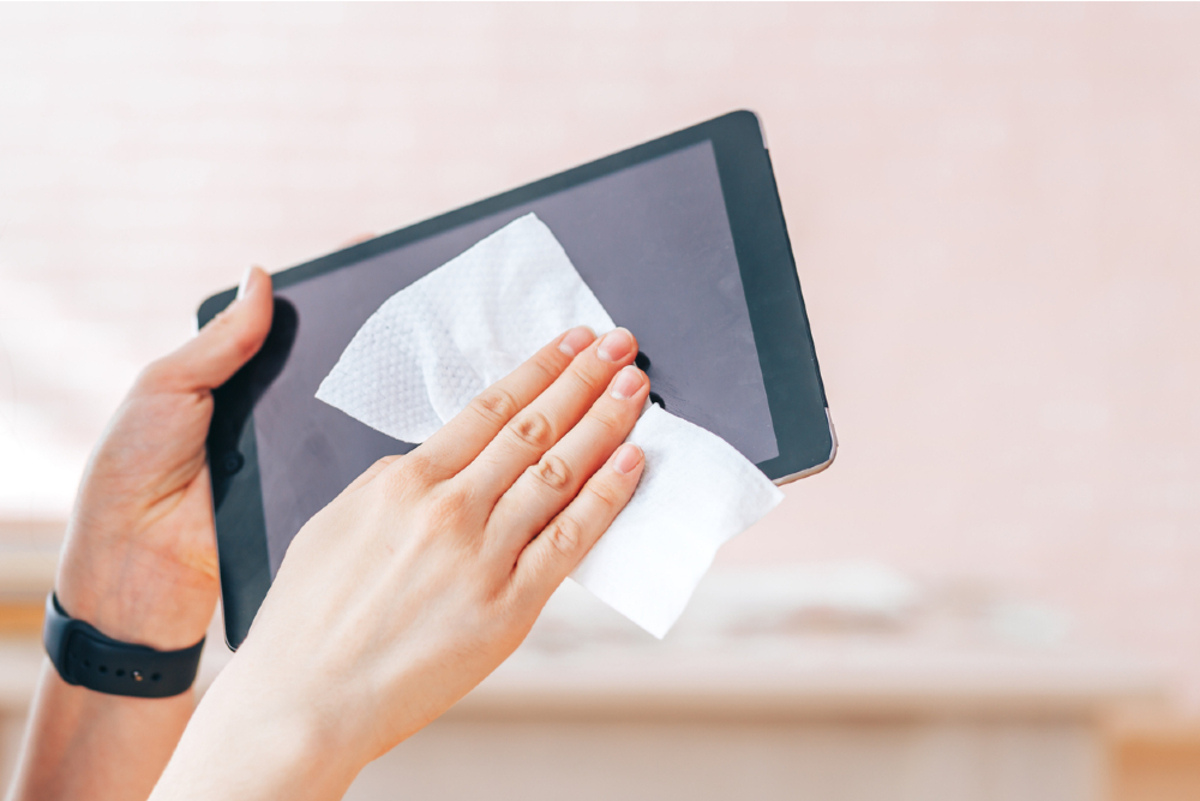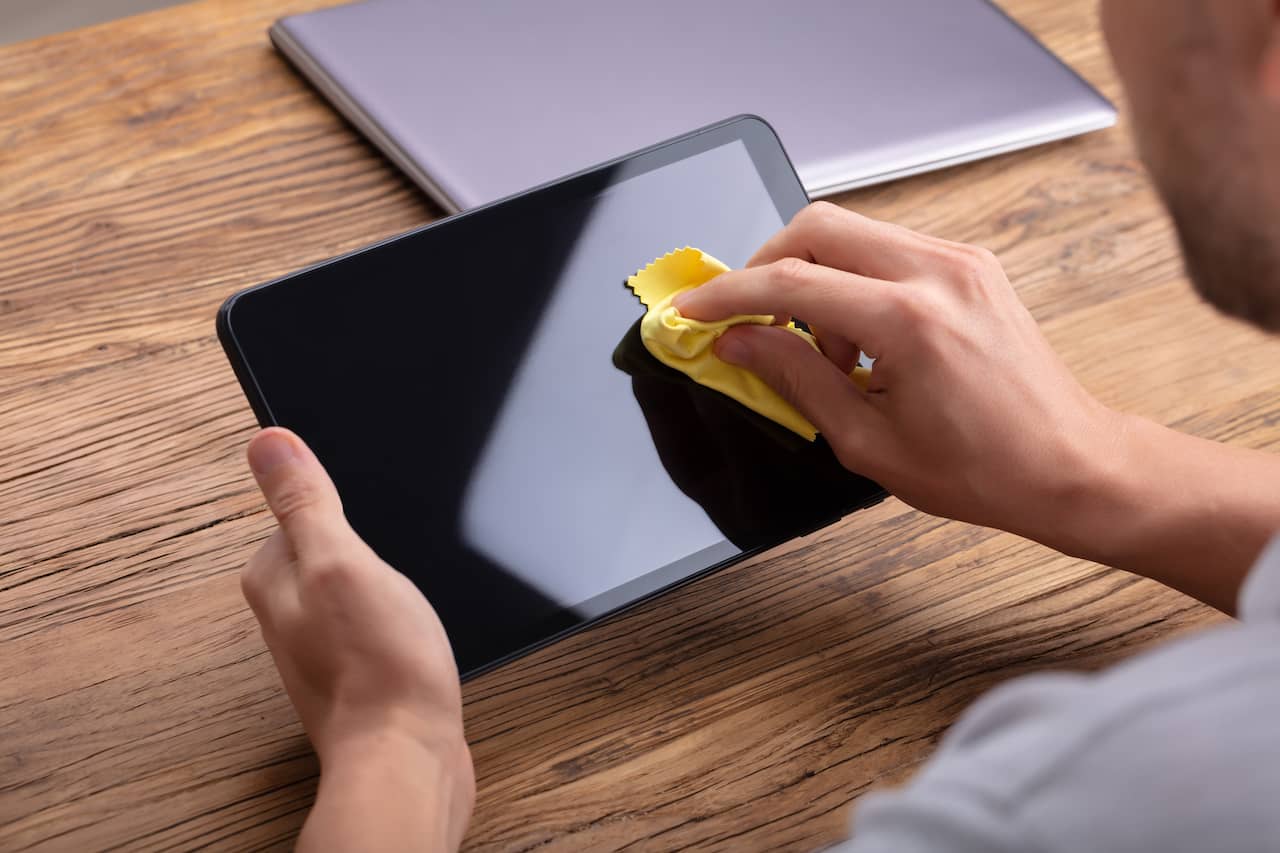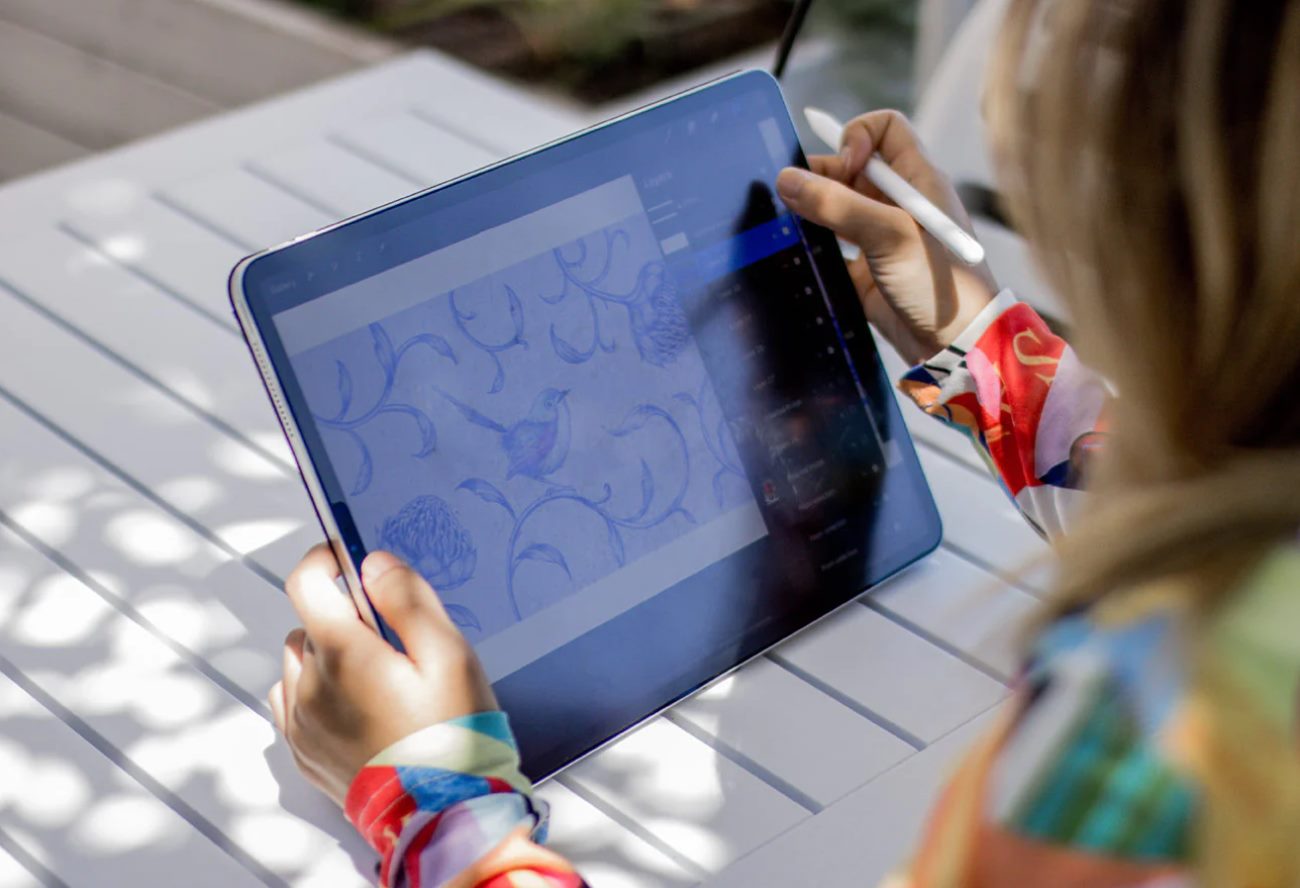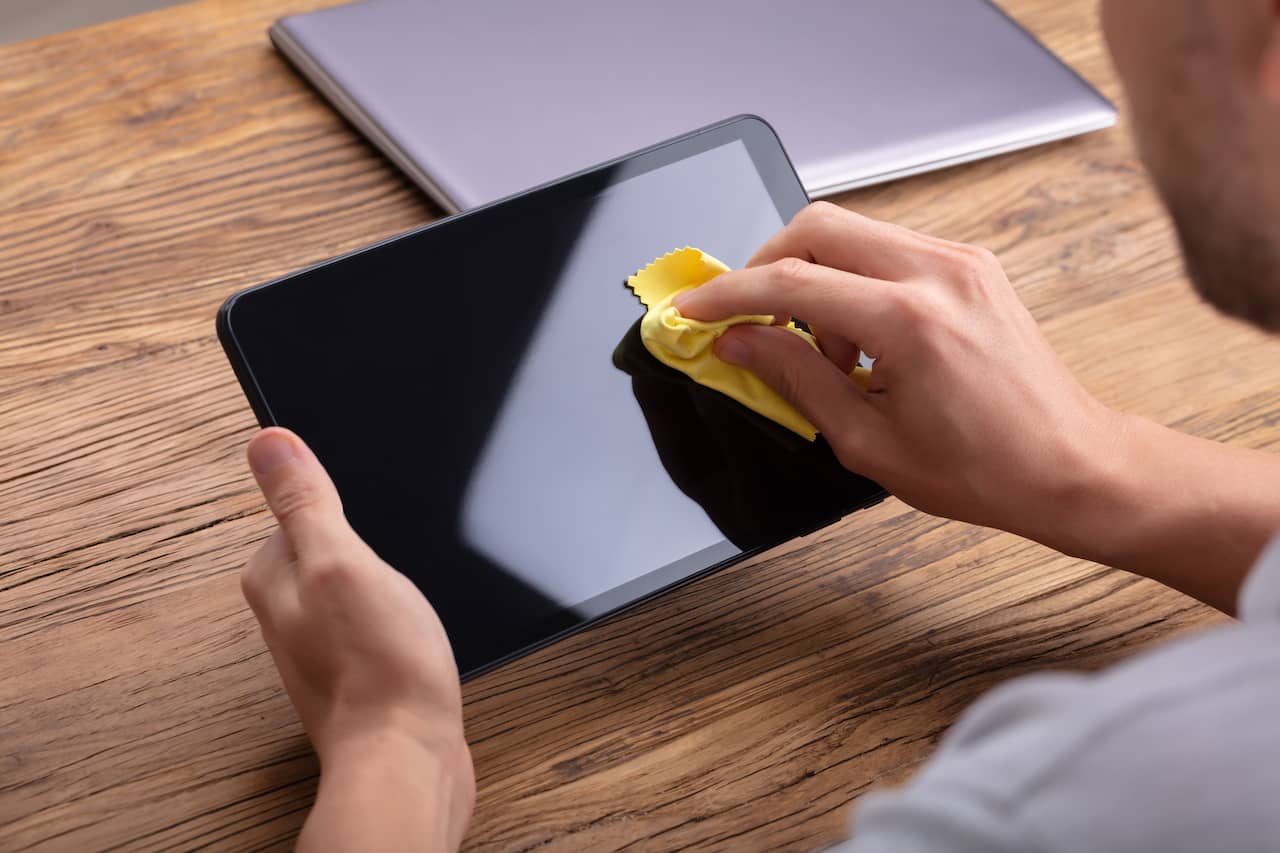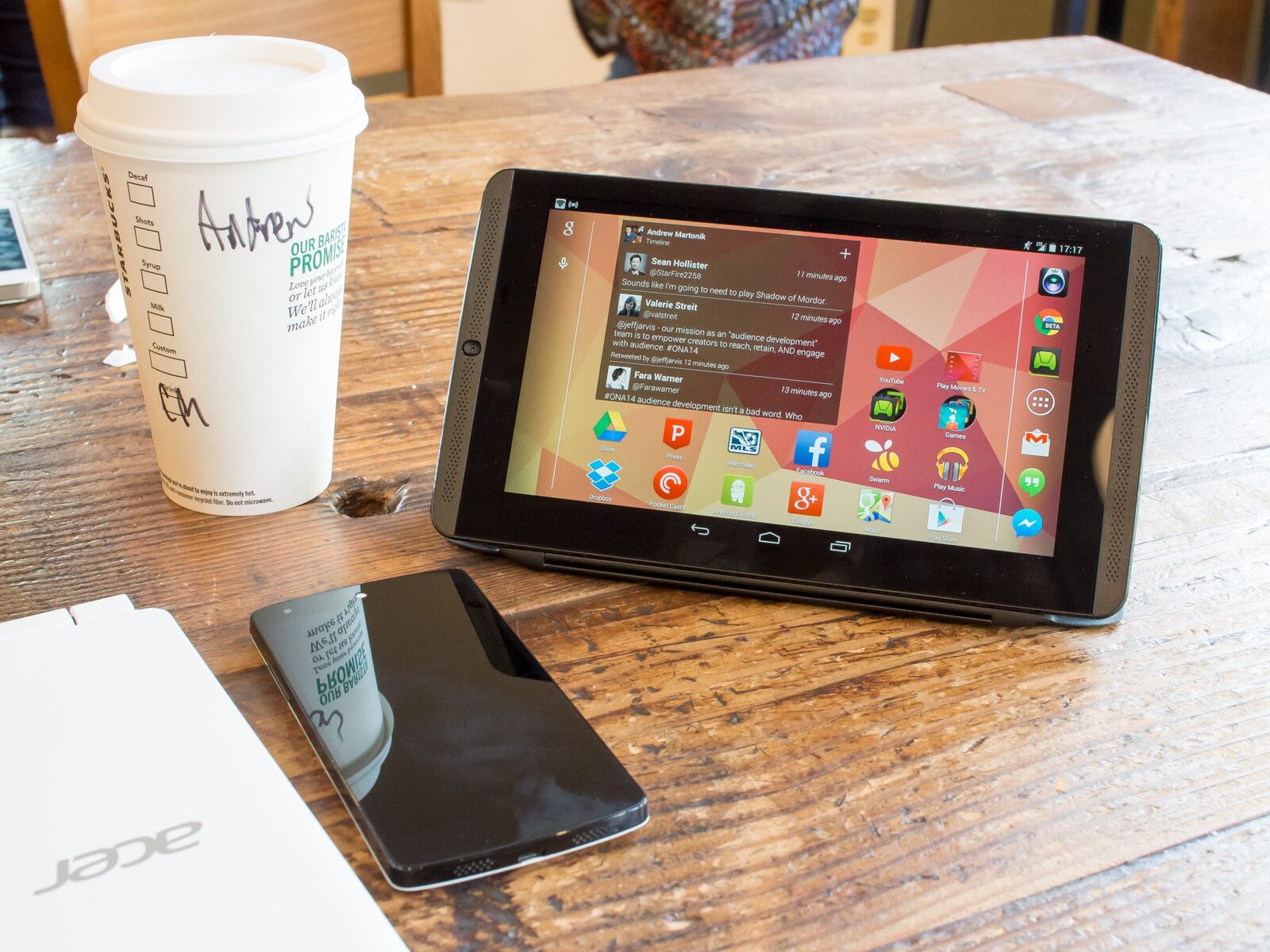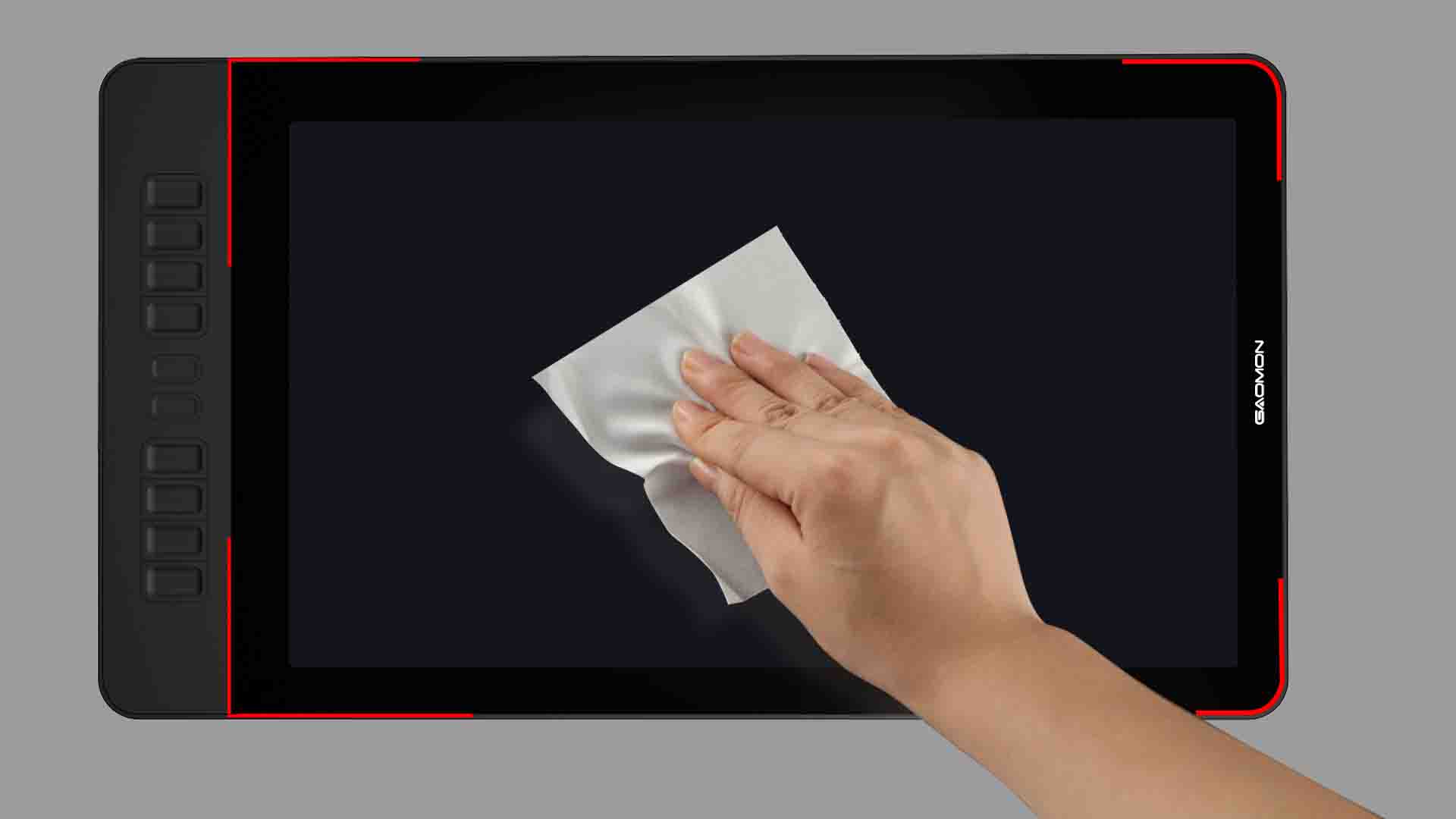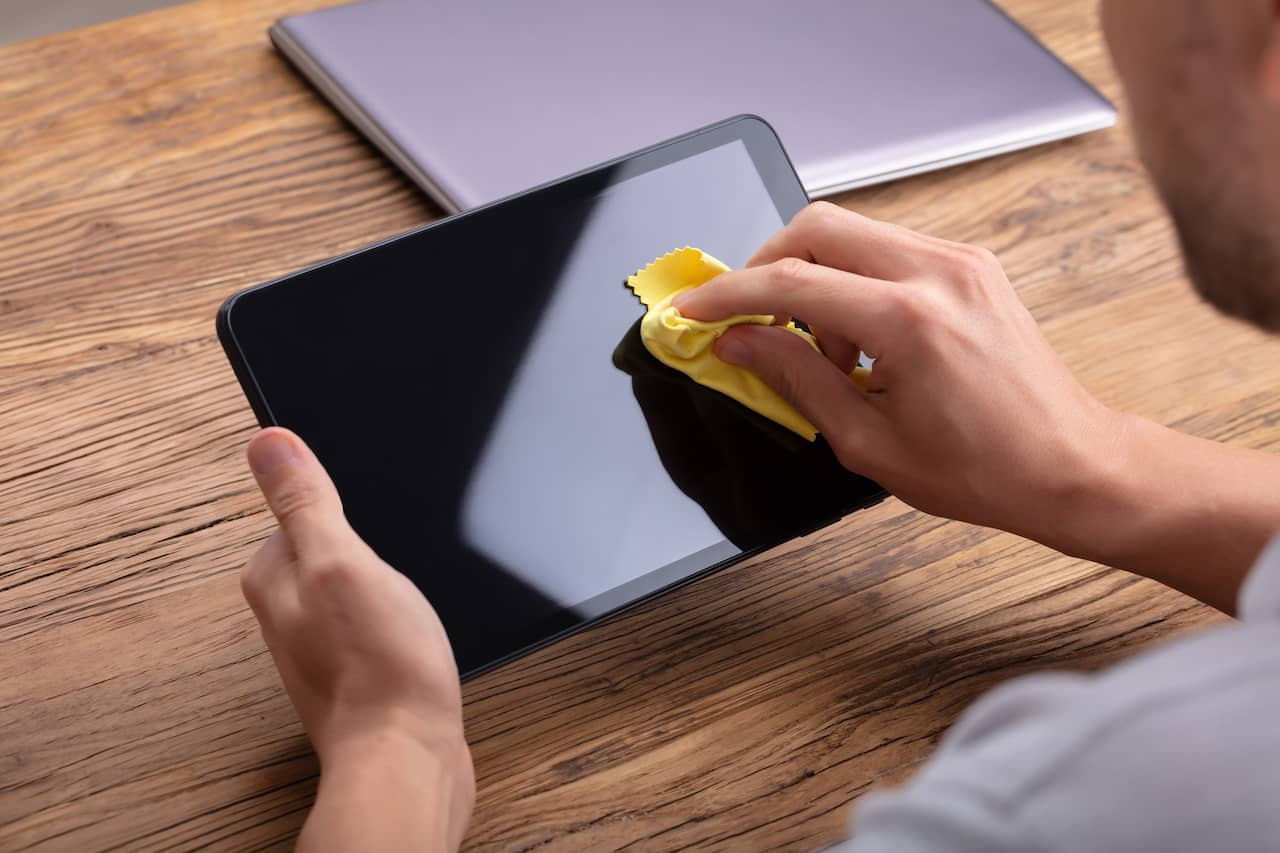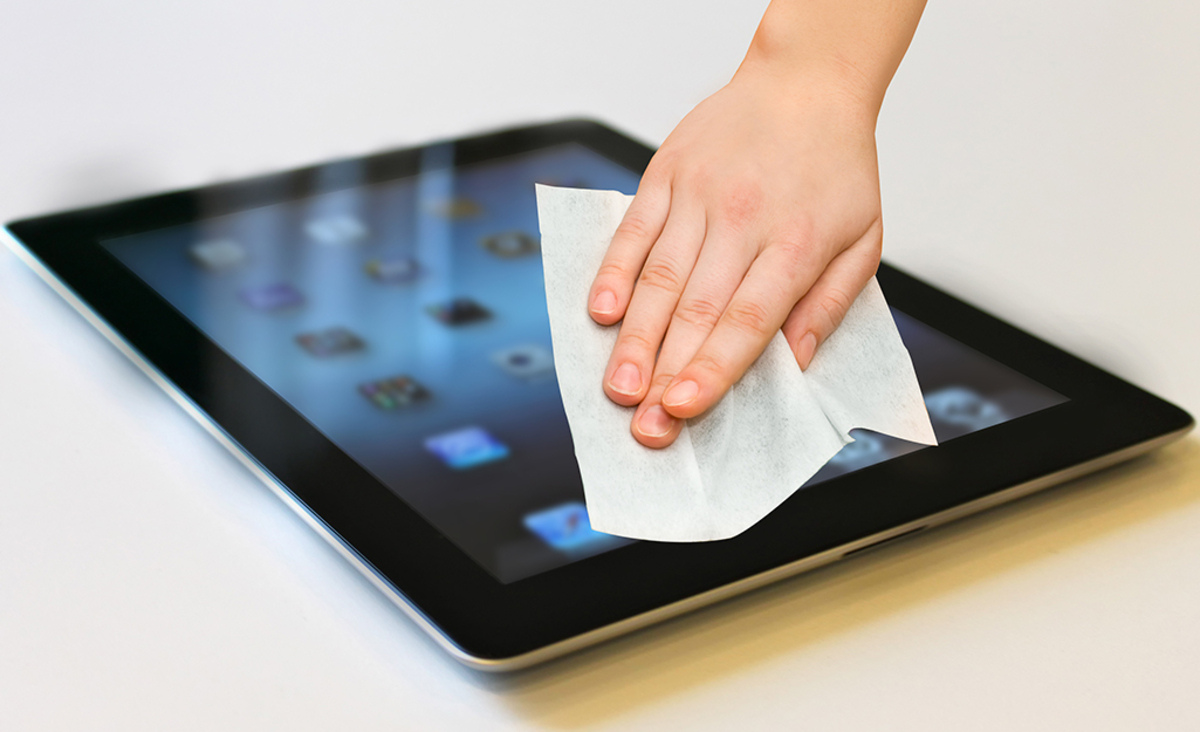Introduction
Welcome to our guide on how to remove scratches from a tablet screen. Tablets have become an essential part of our daily lives, keeping us connected, entertained, and productive. However, with frequent use, it is inevitable that the screen may acquire scratches over time. These scratches not only affect the visual appeal of the tablet but can also interfere with touchscreen responsiveness.
Before you panic and consider replacing your tablet or spending a fortune on professional repairs, there are several methods you can try to remove those annoying scratches yourself. In this article, we will take you through step-by-step instructions on how to effectively remove scratches from your tablet screen, regardless of their severity.
To successfully tackle this issue, you will need to gather the necessary supplies, determine the severity of the scratch, and use specific techniques based on the scratch’s depth. We will explore various methods, from simple home remedies to specialized scratch-removing kits, to help you find the best solution for your tablet.
Please keep in mind that these methods work best for minor to moderate scratches. If your tablet screen is severely damaged or cracked, it is best to seek professional help or consider replacing the screen altogether. However, for minor scratches that are merely detracting from your tablet’s appearance, our guide will assist you in achieving a clean and scratch-free screen once again.
Gather the necessary supplies
Before you begin the process of removing scratches from your tablet screen, it is essential to gather the necessary supplies. Having these items on hand will ensure a smooth and efficient removal process. Here are the supplies you will need:
- A microfiber cloth: This gentle and non-abrasive cloth is perfect for cleaning and buffing the tablet screen. Avoid using paper towels or abrasive materials that could further damage the screen.
- Screen protector: If the scratches on your tablet screen are minor, a screen protector can help hide them and provide an additional layer of protection against future scratches. Choose a high-quality screen protector specifically designed for your tablet model.
- Toothpaste (non-gel): Toothpaste is a common household item that can be used to buff out shallow scratches on a tablet screen. Opt for a non-gel variety as gel toothpaste may contain abrasive particles that could further damage the screen.
- Microfiber or cotton swabs: These small, soft-tipped applicators are useful for applying toothpaste or any other cleaning solutions to the tablet screen. They allow for precise and controlled application, minimizing the risk of excess product entering the device.
- Scratch remover kit (optional): If the scratches on your tablet screen are more severe, you may consider investing in a scratch remover kit. These kits typically include a special solution, polishing pads, and instructions on how to use them effectively. Choose a reputable brand to ensure the best results.
Once you have gathered these supplies, you are ready to move on to the next step: determining the severity of the scratches on your tablet screen.
Determine the severity of the scratch
Before proceeding with any scratch removal method, it is important to determine the severity of the scratch on your tablet screen. This will help you choose the appropriate method and avoid further damage to the screen. Here are some steps to help you assess the extent of the scratch:
- Inspect the screen under proper lighting: Find a well-lit area and tilt your tablet at different angles to examine the screen closely. Look for any visible scratches or indentations.
- Run your finger over the scratch: Gently glide your finger along the length of the scratch. If your fingernail gets caught on the scratch, it indicates a deeper groove. If your fingernail does not get caught, the scratch may be superficial.
- Perform a screen test: Turn on your tablet and display a white background. Examine the screen for any visible lines or distortions caused by the scratch. If the scratch affects the screen’s visibility or touch sensitivity, it may require more intensive repair methods.
Based on the severity of the scratch, you can determine the most suitable approach. For minor surface scratches, simpler methods like using a microfiber cloth or applying a screen protector may be sufficient. However, deeper scratches may require more advanced techniques such as using toothpaste or a scratch remover kit.
Remember, it is crucial to avoid applying excessive pressure or using harsh chemicals on your tablet screen, as this can cause further damage. Proceed with caution and select the method that best matches the severity of the scratch. In the next sections, we will explore various methods to help you remove scratches from your tablet screen effectively.
Use a microfiber cloth to remove minor scratches
If the scratches on your tablet screen are minor and do not affect the visibility or touch sensitivity, using a microfiber cloth can often be enough to remove them. Here’s how you can do it:
- Turn off your tablet: Before you begin, make sure to turn off your tablet and disconnect it from any power sources. This will prevent accidental button presses and ensure your safety.
- Clean the screen: Take a microfiber cloth and gently wipe the screen to remove any dust, fingerprints, or smudges. This will help you see the scratches more clearly and avoid any further damage during the cleaning process.
- Apply light pressure: Fold the microfiber cloth into a small square and hold it with your fingers. With gentle circular motions, apply light pressure to the scratched area. Be careful not to press too hard, as this can cause additional damage.
- Continue buffing: Keep buffing the scratched area for a few minutes, using small, circular motions. The microfiber cloth will help to gradually diminish the appearance of the scratches.
- Reassess the screen: After buffing, clean the screen again with the microfiber cloth and inspect it under proper lighting. If the scratches are still visible, you may need to try alternative methods to remove them.
Using a microfiber cloth is a gentle and safe method for removing minor scratches from your tablet screen. However, it may not be effective for deeper or more severe scratches. If the scratches persist, do not worry; there are other solutions to explore. In the following sections, we will discuss additional methods, such as applying a screen protector or using toothpaste, to tackle different types of scratches on your tablet screen.
Apply a screen protector to hide light scratches
If you have light scratches on your tablet screen that are still visible even after using a microfiber cloth, applying a screen protector can be a simple and effective solution. Here’s how you can do it:
- Clean the screen: Start by cleaning the screen with a microfiber cloth to remove any dust or smudges. This will ensure that the screen protector adheres smoothly and without any imperfections.
- Choose a screen protector: Select a high-quality screen protector that is specifically designed for your tablet model. Look for one that has scratch-resistant properties and provides clear visibility.
- Peel off the backing: Gently peel off the backing of the screen protector, exposing the adhesive side that will adhere to the tablet screen.
- Align and apply: Carefully align the screen protector with the edges of your tablet screen, starting from one side. Slowly lower the screen protector onto the screen, making sure it is lined up correctly.
- Smooth out any bubbles: Once the screen protector is applied, use a microfiber cloth or a credit card wrapped in a soft cloth to smooth out any bubbles or wrinkles. Start from the center and work your way toward the edges.
- Trim if necessary: If the screen protector is slightly larger than the screen, you may need to trim the excess with a sharp pair of scissors for a perfect fit.
By applying the screen protector, you create a protective layer that helps to hide light scratches on your tablet screen. The screen protector acts as a barrier, preventing new scratches and minimizing the visibility of existing ones. It is a quick and cost-effective solution that can significantly improve the appearance of your tablet screen.
While a screen protector can effectively hide light scratches, it may not be able to completely eliminate deeper or more severe scratches. In such cases, you may need to explore other methods, such as using toothpaste, to further improve the condition of your tablet screen. We will discuss this next.
Try using toothpaste to buff out deeper scratches
If you have deeper scratches on your tablet screen that are still visible despite previous attempts, using toothpaste can help buff out the scratches and improve their appearance. Here’s how you can try this method:
- Choose the right toothpaste: Select a non-gel toothpaste without any abrasive particles. Avoid using whitening or tartar control toothpaste as they may have harsh chemicals that could damage the screen. Plain white toothpaste is an ideal option.
- Clean the screen: Before applying toothpaste, clean the tablet screen with a microfiber cloth to remove any dust or dirt. This will ensure a smoother buffing process and prevent any additional scratches.
- Apply a small amount of toothpaste: Squeeze a pea-sized amount of toothpaste onto a microfiber or cotton swab. This small amount is sufficient for treating the scratches on your tablet screen.
- Gently rub the toothpaste on the scratches: Using the swab, gently rub the toothpaste onto the scratched areas of the screen in a circular motion. Apply light pressure while ensuring that the toothpaste is evenly distributed over the scratches.
- Continue buffing: Keep buffing the scratched areas for 2-3 minutes or until you see improvement. It is important to be patient and avoid applying excessive pressure, as this could cause additional damage to the screen.
- Clean the screen and reassess: Once you are satisfied with the buffing, clean the screen with a microfiber cloth to remove any excess toothpaste. Examine the screen under proper lighting to check if the scratches have been diminished.
Toothpaste contains mild abrasive properties that can help polish the surface of the screen and reduce the appearance of deeper scratches. While this method can be effective, it is essential to exercise caution and test it on a small inconspicuous area of the screen first to ensure compatibility and avoid any adverse reactions.
If the toothpaste method doesn’t yield satisfactory results, don’t worry. In the next section, we will discuss the option of using a scratch remover kit, which can provide a more specialized and targeted approach for dealing with deeper scratches on your tablet screen.
Consider purchasing a scratch remover kit
If you have deep and stubborn scratches on your tablet screen that have not been successfully addressed by previous methods, you may want to consider purchasing a scratch remover kit. These kits are specifically designed to effectively remove scratches from various screen surfaces. Here’s what you need to know about using a scratch remover kit:
- Research and choose a reputable brand: Take the time to research different scratch remover kits available on the market. Look for reputable brands that have good customer reviews and a track record of success in removing scratches from tablet screens.
- Read and follow the instructions: Each scratch remover kit will come with its own set of instructions. Carefully read and follow the instructions provided by the manufacturer to ensure you use the kit properly. This will maximize your chances of achieving the desired results.
- Prepare the screen: Thoroughly clean the screen with a microfiber cloth to remove any dust, fingerprints, or smudges. This will allow the scratch remover solution to work effectively and minimize any interference from dirt particles.
- Apply the scratch remover solution: Depending on the kit, there may be a specific solution or compound to apply to the scratched area. Follow the instructions to apply the solution using a microfiber or cotton swab, ensuring that it covers the scratched area evenly.
- Buff and polish: Most scratch remover kits will include a specialized polishing pad or cloth. Use this pad or cloth to gently buff and polish the scratched area in circular motions. This will help remove the scratches and restore the tablet screen’s clarity.
- Reassess the screen: After using the scratch remover kit, clean the screen with a microfiber cloth and inspect it under proper lighting. The scratches should be significantly reduced or completely removed. However, if any scratches still persist, you may need to repeat the process or consider seeking professional help.
A scratch remover kit offers a more specialized and targeted approach for removing deep scratches from your tablet screen. While there may be an additional cost involved, these kits are often designed to deliver effective results and restore the screen’s original appearance.
However, it is important to note that not all scratches can be completely eliminated, and the success of the kit may depend on the severity of the scratches and the type of screen technology your tablet uses. If the scratches persist or if you are uncertain about using a scratch remover kit, it may be best to consult a professional or seek advice from the tablet manufacturer.
Prevention tips to avoid future scratches
After going through the process of removing scratches from your tablet screen, it’s essential to take proactive steps to prevent future damage. By following these prevention tips, you can help maintain a scratch-free tablet screen:
- Use a screen protector: Applying a screen protector is not only useful for hiding scratches but also for preventing new ones. Invest in a high-quality screen protector that offers scratch resistance and replace it when necessary.
- Handle with care: Treat your tablet with care and avoid unnecessarily rough handling. Be mindful of placing sharp objects or abrasive materials near the screen, as they can cause scratches.
- Keep it separate: When storing your tablet or carrying it in a bag, make sure to keep it in a separate compartment or use a protective case. This will help prevent accidental scratches from keys, pens, or other items that may come in contact with the screen.
- Regular cleaning: Clean your tablet screen regularly using a microfiber cloth. This will remove dirt, dust, and fingerprints that can potentially cause scratches over time.
- Avoid direct contact: Avoid direct contact between the tablet screen and hard surfaces. Place your tablet on a soft surface or use a tablet stand when not in use to minimize the risk of scratches caused by accidental contact.
- Be cautious during cleaning: When cleaning your tablet, avoid using harsh chemicals or abrasive cleaning solutions. Stick to gentle cleaning products specifically designed for electronic screens, and always follow the manufacturer’s instructions.
- Transportation precautions: If you need to transport your tablet, make sure to secure it properly to avoid unnecessary movement or potential impacts. Use a padded bag or case to provide additional protection during travel.
- Regular maintenance: Periodically inspect your tablet screen for any signs of wear or scratches. Address any minor scratches as soon as possible to prevent them from worsening over time.
- Update your device: Keeping your tablet’s software up to date can help improve its performance, including the quality of the screen. Regular software updates can address any potential issues that may affect the screen’s durability.
- Consider a bumper or case: If you are concerned about the durability of your tablet, you may want to invest in a protective bumper or case. These accessories offer an extra layer of protection against scratches, bumps, and accidental drops.
By incorporating these prevention tips into your tablet usage routine, you can significantly reduce the risk of future scratches and maintain a visually appealing and functional screen. Prevention is key in ensuring the longevity and overall quality of your tablet screen.
Conclusion
Scratches on a tablet screen can be frustrating, but thankfully, there are several methods to remove or minimize their appearance. From using a microfiber cloth to applying a screen protector, toothpaste, or a scratch remover kit, each method offers its own benefits depending on the severity of the scratches.
It is important to assess the severity of the scratches before choosing a method, as well as to follow the specific instructions for each technique. Whether you have minor surface scratches or deeper ones, there is a solution that can help restore the clarity and functionality of your tablet screen.
Remember to handle your tablet with care to prevent future scratches. Using a screen protector, avoiding direct contact with hard surfaces, and regularly cleaning the screen are simple steps that can go a long way in maintaining a scratch-free tablet screen.
If you find that the scratches on your tablet screen are too severe to be resolved on your own, it may be best to seek professional assistance or contact the tablet manufacturer for guidance.
By following the tips and techniques outlined in this guide, you can restore the appearance of your tablet screen and enjoy a visually pleasing and scratch-free experience in the future.









